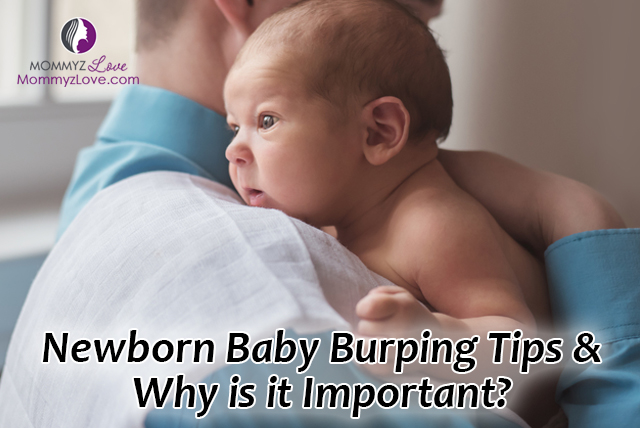There’s a reason why your baby can get cranky and fussy during and after feedings. It might be likely due to the bloated and gassy feeling they have whenever they swallow a bit of air along with their feedings.
When your baby nurses on your breasts, it’s inevitable that will be taking in a little air along with the breast milk. The air bubbles can get trapped in their stomach, making them feel uncomfortable. This can lead them to stop eating in between a feeding session. To avoid this from happening, it’s recommended to burp and belch your baby in between and after nursing.
Baby Burping Tips – How Should You Burp A Baby
There are three basic positions to burp a baby. You can put them on your shoulder, make them lie face-down on your lap, or sitting them up.
- On the shoulder. Firmly hold your baby’s head against your shoulder. Support the bottom with another hand. Rub or pat the back.
- Lying face down on the lap. Place the tummy of your baby downwards across your lap. The stomach should be in between your legs. Rub or pat the back.
- Sitting up. Hold the baby in a sitting position while supporting their head and chest. Gently pat or rub their back.
How Often Should You Burp Your Baby?
If you’re breastfeeding, you can burp whenever you switch from breast to another or mid-feed in the same breasts. However, keep in mind that not all babies might be frequent burpers.
Some might not be swallowing that much air at all. Others pass gas and thus they wouldn’t be needing to burp. As long as they aren’t fussy and cranky during breastfeeding sessions, they will be fine and there is nothing to be concerned about.
Tips For Burping a Baby
- Have a burp cloth or bib ready in case a little spit up comes along with their burp
- Usually, a gentle pat or rub can make a baby burp. Other times, you may need a little bit more of a firmer hand.
- Focus the rub or pat on the left side of your baby’s back. This is where the stomach is usually placed.
- If the baby is cranky or fussy in between the feeding, try burping right away so that they can still continue breastfeeding.






